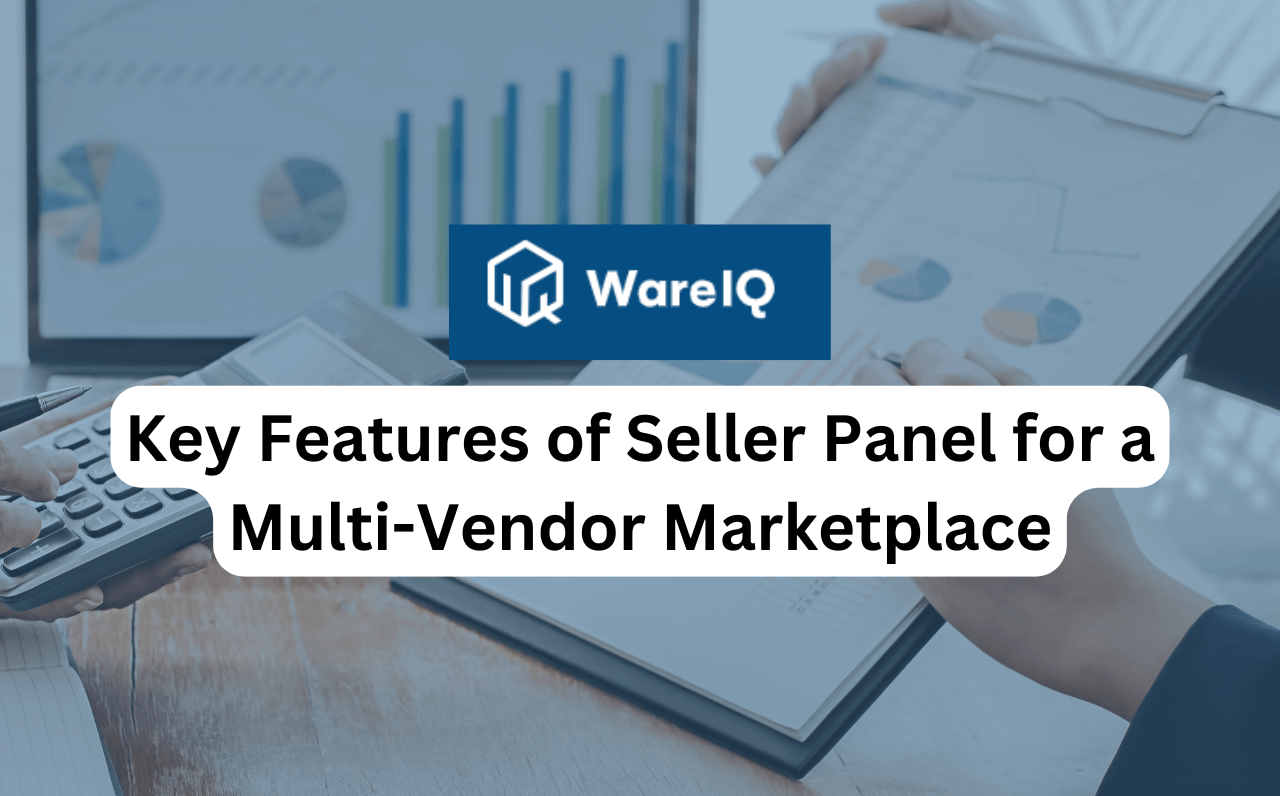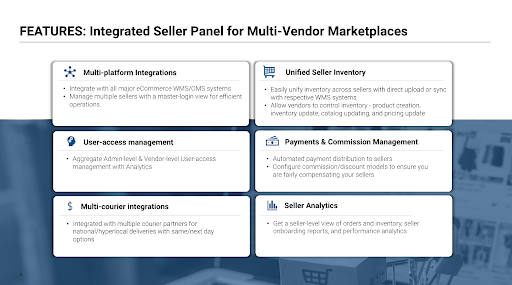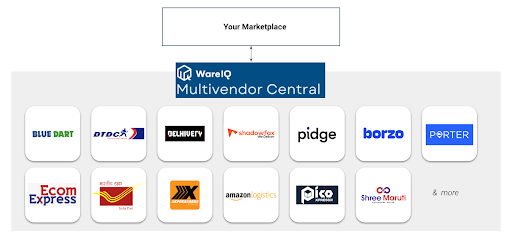What Are Key Features of Seller Panel for a Multi-Vendor Marketplace?

Running a multi-vendor marketplace is no small task. From managing inventory to processing orders, ensuring timely payments, and handling shipping logistics, vendor operations are inherently complex. Now, multiply this complexity across dozens or even hundreds of vendors, each with its unique systems and workflows. Without a smooth, mature seller panel capable of handling edge cases and accommodating all possible scenarios, marketplaces risk heavy seller churn. Many sellers are also not on any tech and run their operations manually, which adds further complexity to the onboarding and management process. This churn not only affects vendor satisfaction but can also reduce your SKU range and availability, ultimately diluting your marketplace’s value proposition.
A robust seller panel is the backbone of any successful marketplace, ensuring that vendor operations are streamlined, efficient, and scalable. In this blog, we’ll explore the features of seller panel for multi-vendor marketplace that must be offered to avoid these pitfalls and create a thriving marketplace ecosystem.

Key Features of Seller Panel for Multi-Vendor Marketplace
1. Unified Inventory Management
Managing inventory across multiple sellers can be challenging, especially when vendors use various Warehouse Management Systems (WMS) or Order Management Systems (OMS). Additionally, many sellers may not use any technology and run their operations manually, adding another layer of complexity to inventory management. A seller panel should offer real-time inventory syncing, allowing sellers to update stock levels, manage product listings, and track orders from a single platform. This minimizes stockouts, overstocking, and misrouted orders, ensuring smoother operations for both sellers and marketplace admins.
2. Multi-Platform Integration
Many vendors operate with their own systems. The seller panel should integrate with these existing WMS/OMS platforms to reduce onboarding friction. Seamless multi-platform integration allows sellers to maintain their current operations while participating in the marketplace, leading to faster vendor onboarding and minimal operational disruption.
3. Order Management and Fulfillment
An effective seller panel consolidates order management, providing vendors with real-time visibility into incoming orders, shipping statuses, and fulfillment requirements. The panel should support features like automatic order assignment based on inventory location and order splitting to optimize fulfillment times and costs. This is especially beneficial for marketplaces managing thousands of orders daily across multiple vendors.
4. Payments and Commission Management
Handling payments and commissions can often lead to errors, affecting vendor trust. A seller-panel should automate the process of payments and commission calculations, ensuring that vendors are compensated accurately and on time. This automation minimizes disputes and boosts seller satisfaction.
5. User Access and Performance Analytics
To efficiently manage a marketplace, the admin must have a centralized view of all vendor operations. The seller panel should offer role-based access for both marketplace admins and individual vendors, allowing each to access the relevant data without overwhelming them with unnecessary information. Additionally, performance analytics—such as order fulfillment rates, inventory levels, and sales performance—enable both marketplace operators and sellers to make informed decisions.

6. Multi-Courier Shipping Integration
Shipping is a key part of the seller-panel’s functionality. By integrating with multiple courier services, vendors can choose the most cost-effective and fastest shipping options based on customer locations. This flexibility ensures that orders are delivered on time, improving the overall customer experience and vendor satisfaction.
7. Customizable User Interface
Every seller has unique needs when it comes to managing their products, orders, and payouts. A great seller panel provides customizable dashboards that allow vendors to personalize their views, focusing on the data that’s most important to them—whether that’s sales, inventory, or returns.
Why Your Marketplace Needs These Features
Without these essential features, managing multiple vendors becomes a manual and error-prone process, leading to slow growth and dissatisfied sellers. As marketplaces scale, the operational complexity grows, and without an integrated seller panel, vendors are likely to face issues such as delayed payouts, inventory mismanagement, and shipping delays.
A well-designed seller panel resolves these issues, streamlining vendor onboarding, enhancing inventory control, and automating key processes such as payments and shipping.
Also check: Advantages of Multi Vendor Marketplace Platforms
How WareIQ’s MultiVendor Central Can Help
At WareIQ, we understand these challenges deeply, which is why we created MultiVendor Central—a powerful seller panel designed specifically for multi-vendor marketplaces. With seamless integration into existing WMS/OMS systems, automated payments and commission management, real-time inventory tracking, and multi-courier shipping integration, WareIQ’s solution makes it easier for marketplaces to scale efficiently.
Our platform has helped marketplaces reduce vendor onboarding times by 60%, minimized payout errors by 40%, and saved admins up to 30 hours per week through automation. Leading marketplaces like GetSupp, POP CLUB, and FYVA trust WareIQ to manage their vendor operations smoothly.
Ready to streamline your marketplace operations? Book a demo with WareIQ today and discover how our MultiVendor Central can reduce operational complexity and help your marketplace grow efficiently.
You may also like to read: WareIQ’s MultiVendor Central: A Unified Seller Panel for Marketplaces
Supercharge your fulfilment with WareIQ now, contact our team.

Harsh Vaidya
Harsh Vaidya is the Founder & CEO of WareIQ - a Y-Combinator-backed full-stack fulfillment solution catering to the fulfillment & shipping needs of 400+ eCommerce brands across categories. He was previously the Chief of Staff at Pitney Bowes managing Corp Dev & Strategy for $2.4 B SMB BU. He has 10+ experience in Strategy Consulting & SMB tech.
Read all of Harsh Vaidya's Posts







